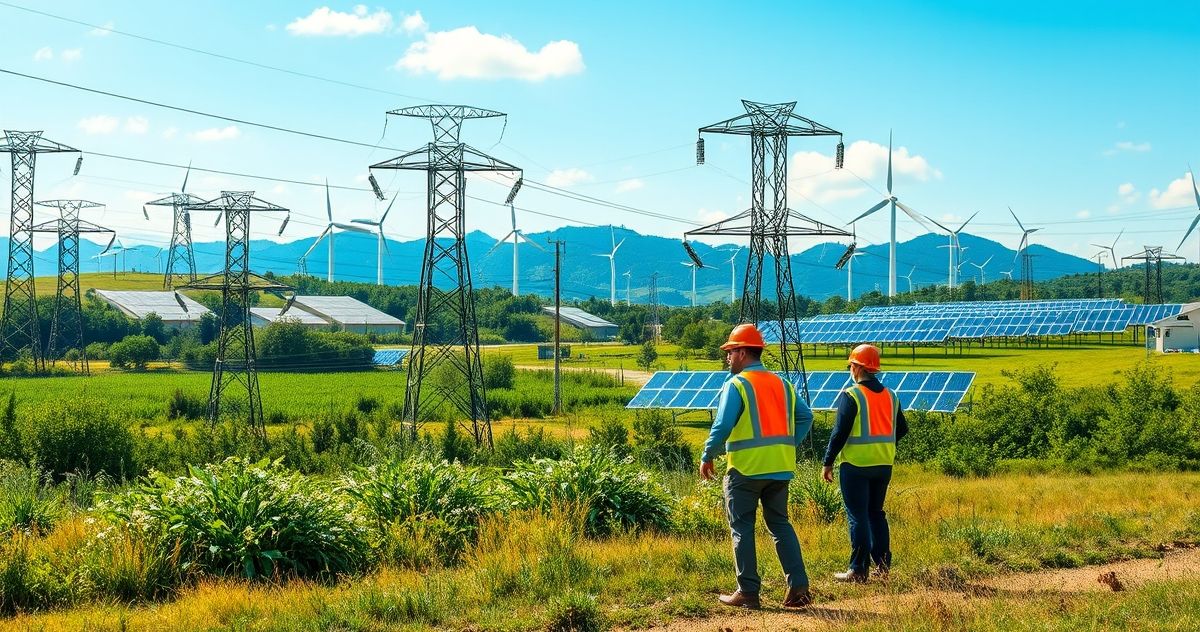What is the Electric Power Grid Resilience Credit?
The Electric Power Grid Resilience Credit is a tax credit designed to provide incentives for utility companies to invest in technologies and infrastructure that enhance the resilience and reliability of the electric power grid. This means that utility companies, which serve as the backbone of energy distribution, can receive financial inducements to modernize and enhance the robustness of their electrical grids against environmental disruptions and technological vulnerabilities.
Primary Purpose
The core objective of the Electric Power Grid Resilience Credit is to mitigate the risks associated with electric grid outages caused by extreme weather events, cyber-attacks, and other catastrophic disruptions. By offering a tax credit, the government aims to promote proactive investment in grid enhancements and innovations, ensuring a reliable and steady supply of electricity to consumers.
Key Features or Components
Investment in Technology
The credit encourages investments in advanced technologies such as automated response systems, smart grid technology, and energy storage solutions that increase a power grid’s adaptability to fluctuations in supply and demand.
Infrastructure Upgrades
It includes credits for infrastructural enhancements designed to withstand and quickly recover from significant disruptions, including weatherproofing existing transmission lines and advancing backup systems.
Research and Development
This tax credit may also fund research initiatives aimed at discovering new solutions for improving grid resilience and sharing best practices across the industry.
Filing and Compliance Requirements
Utility companies seeking to claim the Electric Power Grid Resilience Credit must follow strict compliance processes. These typically include:
- Filing specific forms that detail the scope and cost of infrastructure upgrades or technology investments.
- Demonstrating compliance with governmental or industry standards and guidelines on advanced grid technologies.
- Providing an assessment of how these investments enhance overall grid reliability, potentially requiring third-party evaluations.
Additionally, companies may need to maintain detailed records and documentation that substantiate their qualified expenditures, a critical component for auditing purposes.
Penalties or Consequences for Non-Compliance
Failure to adhere to compliance requirements can result in significant penalties, such as revoking the credit altogether, financial fines, or additional taxes. Furthermore, companies may face increased scrutiny in subsequent audits, impacting their ability to obtain future credits or deductions.
Importance or Significance in Tax Resolution and Compliance
The Electric Power Grid Resilience Credit plays a vital role in aligning utility companies with broader policy initiatives aimed at environmental responsibility and energy security. By leveraging this credit, companies can reduce their tax liabilities while simultaneously contributing to public safety and energy reliability. This aligns with fiscal strategies to mitigate unforeseen financial liabilities arising from grid failures or service disruptions, fulfilling both economic and environmental priorities.
Benefits to Stakeholders
Investors and stakeholders benefit from the stability and foresight that investments in grid resilience provide, seeing reduced risk exposure associated with energy distribution and utility stocks.
Contribution to a Sustainable Future
On a larger scale, by enhancing grid resilience, utility companies can play a pivotal role in achieving national sustainability goals. They become crucial partners in deploying more renewable energy sources while maintaining grid integrity.
In conclusion, the Electric Power Grid Resilience Credit acts as a linchpin in aligning utilities with long-term sustainability goals while offering immediate fiscal benefits. This proactive measure not only safeguards against potential disruptions but ensures a collaborative approach toward a resilient, efficient, and sustainable energy future.

